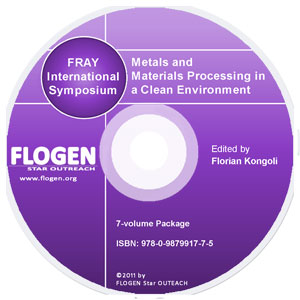
CD shopping page |
2011-Sustainable Industrial Processing Summit
|
| Editors: | Florian K |
| Publisher: | Flogen Star OUTREACH |
| Publication Year: | 2012 |
| Pages: | 708 pages |
| ISBN: | 978-0-9879917-1-3 |
| ISSN: | 2291-1227 (Metals and Materials Processing in a Clean Environment Series) |
Effect Of Iron Precipitation On Sticking Time In Fluidized Reduction Of Fe2O3 Particles
Wang Zhi1; Zhang Ben2; Gong xuzhong1; Guo Zhancheng1;1INSTITUTE OF PROCESS ENGINEERING, CHINESE ACADEMY, Beijing, China; 2INSTITUTE OF PROCESS ENGINEERING, CHINESE ACADEMY, zwang@home.ipe.ac.cn, China;
Type of Paper: Regular
Id Paper: 445
Topic: 5
Abstract:
The Fe2O3 particles (150-224 μm diameter) obtained by sintering and crushing were reduced with CO in a laboratory fluidized bed in this study. On account of thermal effect of stepwise reduction reactions from Fe2O3 to Fe, the interesting variation of powder layer temperature was verified through the evolution of ex-endothermal peaks by means of DTA. The sticking time based on the pressure drop was defined to describe the sticking behavior. The results indicated that the sticking occurred during the precipitation stage of metallic iron and XRD analysis found metallic iron in the new sticking particles, therefore, the sticking behaviors was associated with the precipitated iron. The similar sticking phenomenon also appeared during refluidization of the reduced particles with N2, which further proved the above mentioned conclusion. For the same materials, the sticking time decreased with increase of the metallization ratio at the same temperature, due to the larger probability of iron-iron contact with the increase of metallization ratio. However, the influence of the metallization ratio on the sticking time strongly depended on the fluidization temperature. Apart form the precipitation kinetics, the temperature determined the thermal characteristic of the newly precipitated iron, such as its surface tension or viscosity. Maybe the thermodynamic factors were more important when judging the sticking behaviors.